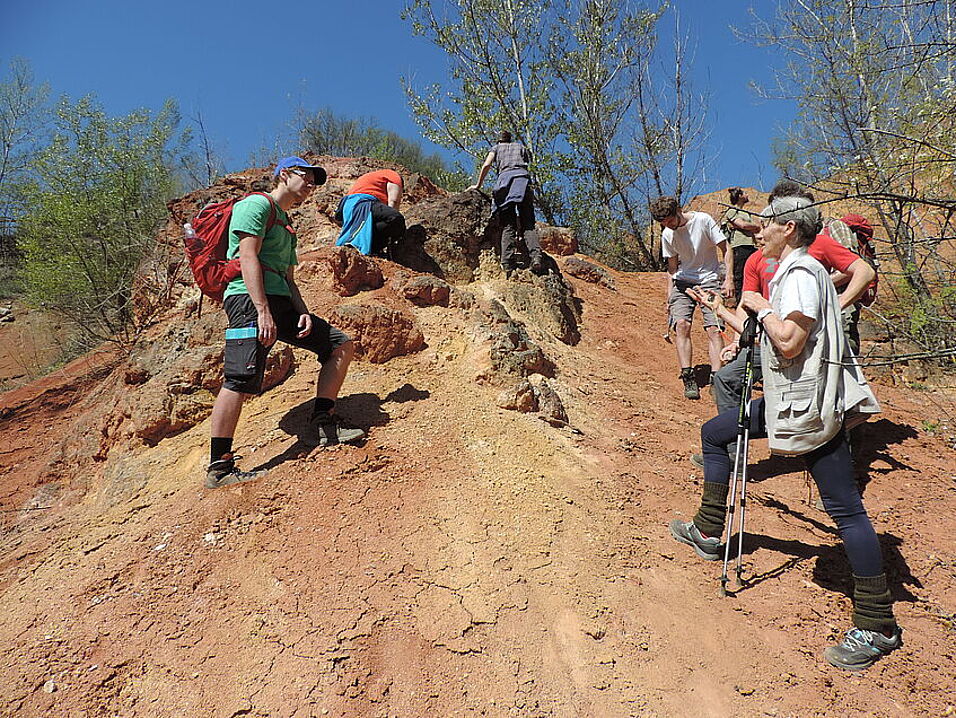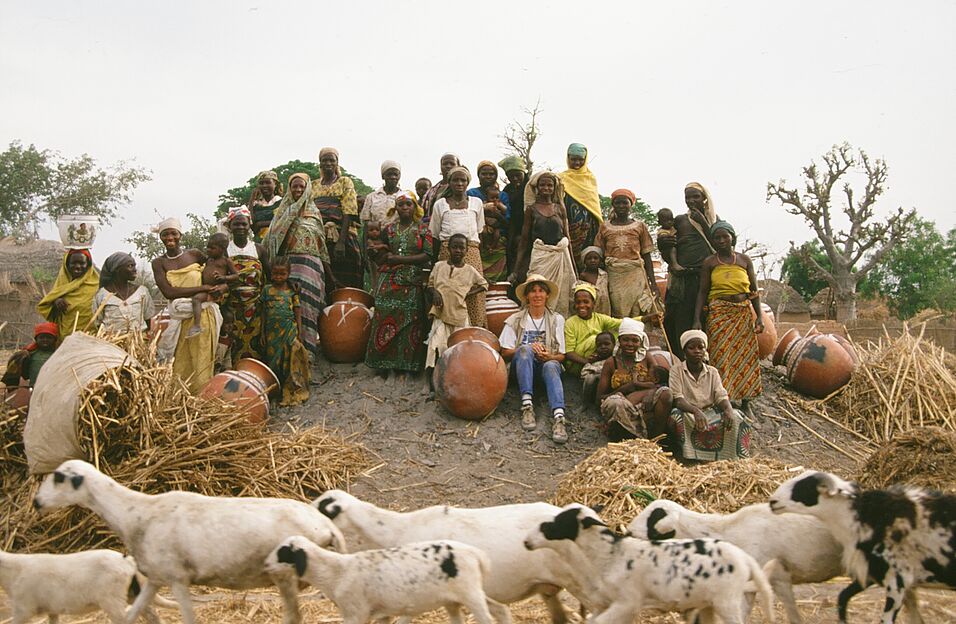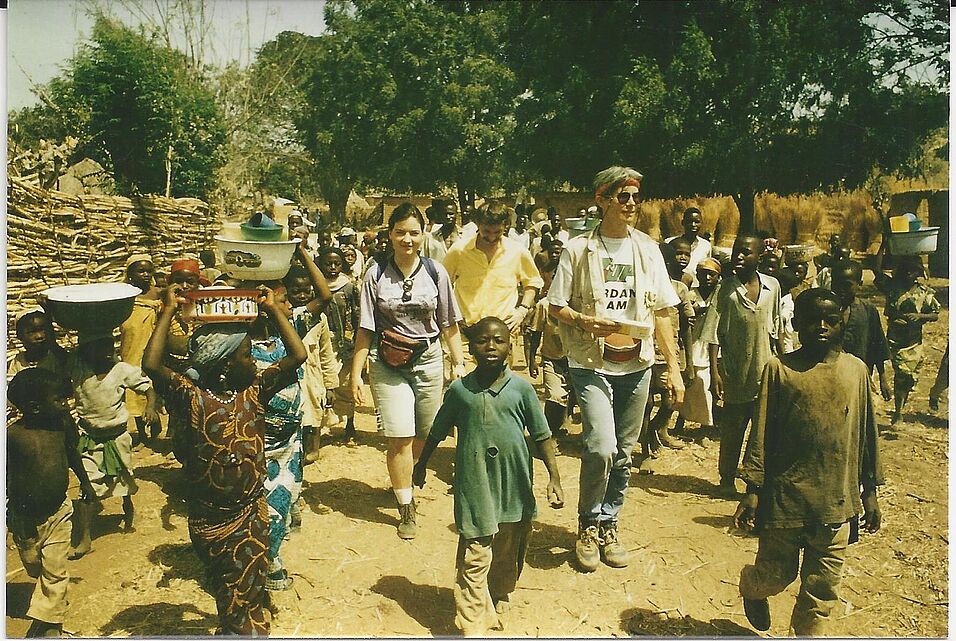What is so fascinating about your research area?
Ever since I began my studies in Geology I have been fascinated by those intervals of the Earth’s history the documents of which were missing from the stratigraphic record. They are called unconformities.They interrupt otherwise continuous sequences either of marine or of terrestrial sediments. In the sedimentary environment unconformities may be recognized as a boundary-surface between rocks caused by a period of erosion or by a pause in sediment accumulation, followed by the deposition of often much younger sediments than those underlying the boundary-surface.
To understand the story behind an unconformity is not an easy task. You must look out for subtle diagenetic features, or for any traces of material left over on the unconformity-surface by the supposed erosion. Bauxites and also non-bauxitic paleosols being such materials, raised (and captured) my interest already early in my career. They seemed to be so mysterious! There were so many hypotheses regarding their various possible ways of formation. And all those bauxites/paleosols are, indeed, potentially informative regarding the story behind the unconformity underneath…
They all seem to be parts of a big jigsaw-puzzle, many pieces of which were (and are) still there awaiting for somebody to place them into their appropriate position and reconstruct the story behind… It has been a never-ending intellectual game!
Which central message should your students remember?
Remember, that the essence of all geology is: to assemble the jigsaw-puzzle! It is more difficult than to assemble the ones sold in toy-shops, because in geology we never have quite all the puzzle-pieces at our disposal (erosion and time remove many of them) and – what is more - we do not have the picture into which we are supposed to place the individual pieces. We, ourselves, must invent the picture (the “working hypothesis”) and finally when we think we succeedeed placing all pieces in their right position, it often happens that we have one single piece left over, impossible to fit into the picture.. Then, we should throw away the whole picture (our “beloved” hypothesis), we have to design another one (develop a new hypothesis) and – maybe – we even have to set out to find more puzzle-pieces to work with (i.e.: go to the field for additional observations and for more rock-samples)…. The two tools you can always rely on, are: Reason and the Hammer (Mente et Malleo) This is the „take-home” message!
Why did you decide to do research and teach at our Faculty?
Ever since my graduation I have had fruitful professional relationships with the staff of both the University of Vienna and the Geologische Bundesanstalt. I remember prestigious names of people like Prof. J. Zemann, Prof. H. Wieseneder, Prof. E. Schroll , Prof. P. Faupl, Dr. A. Ruttner, Dr. B. Plöchinger and Dr. H. Lobitzer. I had the pleasure of their acquaintance partly because of the already then existing collaboration between our institutions and partly because of the activity within ICSOBA (the International Commitee of the Studies on Bauxites, Alumina and Aluminium).
My acquaintance with the – much younger but not less prestigious – Prof. Wagreich also dates back to the late ’80ies, when he was a PhD-student of Prof. Faupl. Since our field of interest in geology (sedimentology, Cretaceous bauxites etc.) turned out to be partly overlapping, ever since then, from time to time, we had the opportunity for joint field-work both in Austria and in Hungary.
I had the honour of visiting the University of Vienna already in 1988 and then again in 2018. Every time I learned a lot from the colleagues here! Also, just before the pandemia we had a joint fieldtrip with Prof. Wagreich, Dr. B. Sames and (then) PhD student Kh. Trabelsi hunting for Eocene Charophytes in the cover-sequence of the Gánt bauxite deposit in Hungary. That was also a memorable occasion of our collaboration. So, to sum up all, my relationship with the Dept. of Geology of the University of Vienna, is that of a long-standing, and close professional friendship. This is why I came now to Vienna.
Which three publications characterise your work?
- Dargenio, B ; Mindszenty, A: Bauxites and related paleokarst: Tectonic and climatic event markers at regional unconformities. In: ECLOGAE GEOLOGICAE HELVETIAE 88 : 3 pp. 453-499. , 47 p. (1995)
- Di Stefano, P ; Galácz, A ; Mallarino, G ; Mindszenty, A ; Vörös, A: Birth and early evolution of a Jurassic escarpment: Monte Kumeta, Western Sicily In: FACIES 46 : 46 pp. 273-298. , 26 p. (2002)
- Kelemen, Péter ; Dunkl, István ; Csillag, Gábor ; Mindszenty, Andrea ; Józsa, Sándor ; Fodor, László ; von Eynatten, Hilmar: Origin, timing and paleogeographic implications of Paleogene karst bauxites in the northern Transdanubian range, Hungary. In: INTERNATIONAL JOURNAL OF EARTH SCIENCES 112 : 1 pp. 243-264. , 22 p. (2023)
Full list of publications available at the Hungarien Scientific Bibliography (mtmt)
Thank you & welcome to our Faculty!
- Andrea Mindszenty is Professor emeritus at the Department of Physical and Applied Geology at Eötvös L. University, Budapest. In her research, the former head of Department and expert in mineral exploration and applied sedimentology concentrated on unconformity-related phenomena. She started her career as a junior engineer at Hungarian Aluminium Corporation, then became an assistant at Eötvös University. She worked in bauxite-alumina projects in developing countries such as Mongolia, Nigeria, Vietnam, Pakistan and India. Andrea was also a visiting professor at Universities of Naples, Palermo and Oregon. From 1986 to 1994 she was the co-president of the Hungarian Geological Society. Since 1997, she is a full professor at Eötvös University, Budapest, and from 2014, director of the Institute of Geology. She holds numerous scientific awards, among them the Order of Merit of the Hungarian Republic.
She has been visiting professor at the University of Vienna for several times, last time in 2018. - Department and host: Department of Geology / Prof. Michael Wagreich
- Course in the winter term: VU Paleosols, Bauxites and Paleokarst





